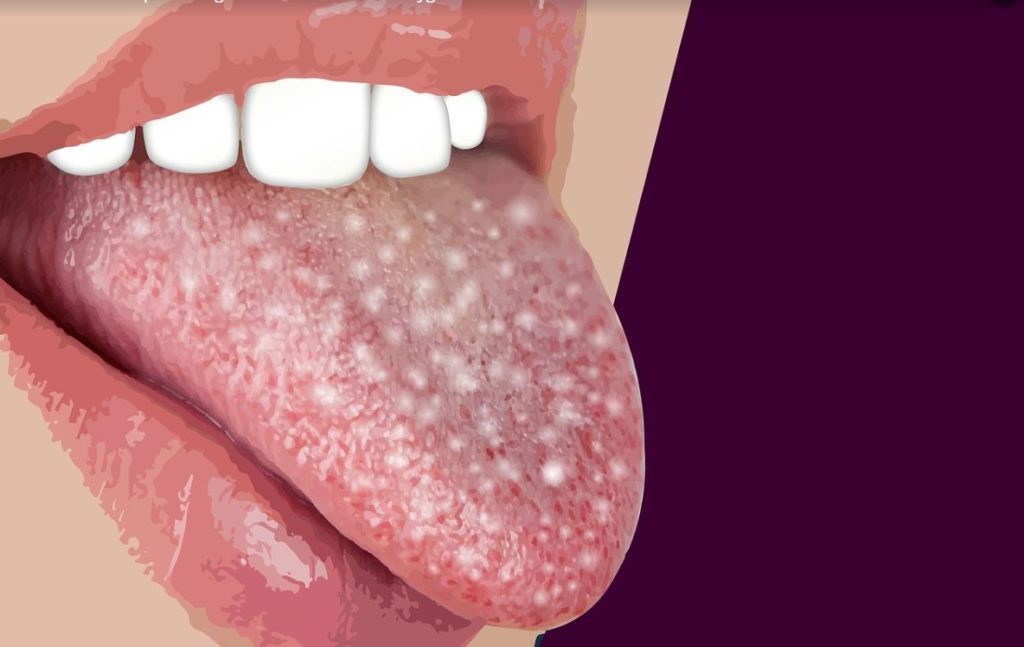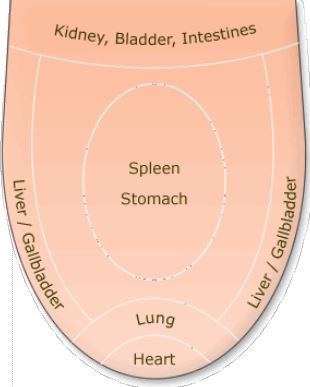Detox is a very important subject that you hear much about nowadays. It’s about getting rid of myriads of toxins that result not just from internal processes, but especially from our polluted environment. By “environment” I actually mean everything from the air we breathe, the beverages we drink, the food we eat, the water we shower or bathe in, the personal care products we use, the medication and vaccines we take… nowadays, all of the above contain in varying degrees more or less poisonous substances that our bodies have to somehow handle.
I believe it to be true that the vast majority of chronic diseases that so many people suffer from nowadays are due to these toxins accumulating in the body, instead of being eliminated from the body. Imagine a water pipe that has growing calcium deposits on its interior walls. In the beginning this will not pose a problem. But as these scale deposits continue to grow, water flow is hampered and eventually the pipe can become completely clogged up. This is basically the problem our bodies have with accumulating toxins.
There are many things that can be done about this problem, including preventing toxins from entering your system in the first place. See, for example, my posts on chem-free hair care, or chem-free dental care. Your mouth actually is an important gateway to your body, and keeping it clean is crucial to disease prevention. Poor oral health has been linked not only to inflammation, but to heart disease, diabetes and even cancer (Brown, 2017). Oral health is usually thought of in terms of healthy teeth. But the mouth consists of more than teeth!
In this post, I want to talk about a simple, little detox procedure you can perform every evening before bedtime, and every morning upon rising – in the bathroom, where you are sure to already find yourself! Tongue scraping!
Why clean your tongue?
Everyone is taught to brush their teeth. But I had never even heard about tongue scraping until I lived in Mongolia and learned about traditional customs there. Mongolian ladies used to carry a little cosmetic bag with five items in it, one of which was a tongue scraper. They would use this little tool every morning and every night.
Scraping your tongue rids it of food debris, bacteria and fungi. If you look at the tongue under a magnifying glass, you will see that its surface consists of tiny bumps (called pappillae) that give it a rough texture – and plenty of hiding places for gunk and germs. This has various health consequences:
–Bacteria and fungi give off toxins, which are usually swallowed down and contribute to inflammation and various health problems.
–The volatile sulfur compounds that bacteria can emit translate into bad breath. Recent studies show that of bad breath is caused by harmful tongue bacteria (Curejoy, 2018).
–It’s also not hard to imagine how all that food debris, bacteria and their toxins can hinder the tongue from it’s job of tasting your food. This dulled sense of taste leads to dulled stimulation in the brain, which in turn leads to lessened perception of food satisfaction. This, again, can lead to overeating and obesity.
–Brushing your teeth while leaving your tongue alone means that the job really is only half-done. The food debris and bacteria can still get from the tongue to the teeth and contribute to dental tartar, tooth decay and gum disease.
All of this means: When brushing your teeth before going to bed, clean your tongue also!
How to scrape your tongue
Of course you can use your tooth brush to brush your tongue, but a U-shaped tongue scraper gets the job done more easily and more effectively. Tongue scrapers are widely available nowadays, made out of silver, metal or plastic.

You simply press down on your relaxed tongue with the scraper as far back as you can manage and scrape forward, then hold the scraper under running water to wash off the surprising amount of debris, and repeat this procedure several times. Please be careful about reaching too far back – you don’t want to engage the gag reflex! But in time, as your tongue gets used to scraping, you may be able to reach further back without gagging. The more tongue you can clean the better – but even a smaller part in front is better than not cleaning the tongue at all. On the other hand – a slight gag can actually help bring up more mucus from the back of the throat.
I have a plastic scraper with a small integrated brush. I find that brushing my tongue up and down (then scrape) and then brushing it from side to side (then scrape) – brings up more debris from in between the papillae. In my opinion, a scraper and a brush together are the most effective tools to get the tongue cleaned. Scrape as many times as you want, up to 10 times. End the procedure with a good rinse.
You will find that your tongue feels cleaner and lighter.
The detox organ in your mouth: the tongue
Once you’ve incorporated tongue cleaning into your daily evening routine you will probably wake up in the morning with a tongue that no longer feels clean. I thought that was strange, seeing as I had cleaned my tongue the night before, and eaten nothing since. What I found out was:
The furry coating on the tongue are toxins which are brought up overnight by the digestive system. The longer your night rest lasts, the more toxins your system has time to bring up. The tongue is, after all, the beginning of the digestive system.
So the first thing to do in the morning is to mechanically clean away that tongue scum your body is trying to eliminate. If you don’t scrape it off, you will simply swallow it and undo your digestive system’s hard night’s work!
I always like to know a little more detail – how does this part of the digestive system work? It is actually the mucous membrane that lines the digestive tract, which tries to get rid of impacted mucus and toxic residue. It does this through the process of diffusion, which is simply the movement of particles from areas of greater to lesser concentration. Areas of greater concentration are further down (the colon, intestines and stomach), whereas areas of lesser concentration are higher up (the throat, tongue and sinuses).
Professor Arnold Ehret called the tongue a “magic mirror” because as soon as the body has a chance to diffuse toxins out of the lower digestive organs, it will do so. Which means mucus will migrate up through the lining of the stomach, up the esophagus, and into the mouth (Snyder, 2010).
This means that the coating on the tongue is a good indicator of how much constipated mucus has accumulated in the digestive organs. Bad breath in the mornings can also be a good indication of how backed up the system is. (Note: Bad breath with a dry mouth can be a side effect of prescription drugs.) So again – the first thing to do every day to detox your system is to simply scrape off the coating your system is “offering up” to you on your “tongue platter” and be rid of it. Of course this is only the beginning of detox – but do start with this simple procedure.
How to mechanically clean out your sinuses
I just mentioned the sinuses as places that particles can be moved up into from out of the digestive system. I used to suffer from post-nasal drip. It was not painful but highly annoying because there would always be mucus gathering in the back of my throat. Then I came across a mechanical sinus drainage exercise developed by Dr. Mandell. He follows the adage “No movement, no function”. By physically moving the sinuses around they can be stimulated to drain quickly.
Here is how: Hook your right index finger into your left ear and comfortably place your right thumb next to your left nostril so it sits on your left cheek bone. Now squeeze index finger and thumb together to move that check bone. Experiment to see how you can move it around in different directions.
You can’t do anything wrong, as long as you are gentle to yourself. If your sinuses have been pretty much motionless for a long time – and especially if they are infected, then it’s possible that movement might cause some pain or a little soreness. But remember – no movement, no function. You want to get those sinuses to function by draining as they should, so they can heal.
Next, with your left hand take hold of the top part of your left ear and pull. Pull in different directions to experiment how your face feels. In my experience pulling up and back actually causes my sinuses to physically move. Don’t be afraid to pull hard, as long as it doesn’t hurt.
Pull about five times, then switch sides.
It probably won’t take too long for a glob of mucus to arrive for elimination (if anything is there). Now there is nothing much left to cause annoyance by a continual drip through the hours.
This is also a great technique if you suffer from sinusitis and related problems.
See Dr. Mandell’s video called “20 second clearing sinus squeeze” on his Youtube channel “motivationaldoc” to get a better, visual explanation of the technique from the man himself! (See the link down below.)
The tongue as a mirror of health
Blogging is fun because you get to learn stuff as you write! I just have to add something I’m learning about the tongue.

Did you know that according to both Chinese Traditional Medicine and Indian Ayurvedic medicine, the tongue is a considered a microcosm of the entire body? All the body’s meridians connect not only to the feet, hands and ears, but also to the tongue, and so different parts of the tongue correspond to different internal organs. Because it is part of the digestive system, digestive disorders are particularly obvious from tongue analysis.
The shape, colour, coating, alignment and surface of the tongue can indicate all kinds of health issues and body imbalances, as well as the body’s level of hydration.
For example, a tongue coated with white patches indicates that its owner isn’t digesting food very well. As a result, bad bacteria and yeast called candida grow at an alarming rate, not only in the digestive tract but even on the tongue itself.
It is amazing how much tongues can actually differ in shape, colour and coating. Consider this diagram:
A healthy tongue will look consistently pink, moist, and have no cracks. Small cylindrical taste buds should be visible over the entire surface of the tongue. If yours looks different from this, you know you have more work to do!
But tongue scraping is still a good start.
When you realize how the tongue is actually connected to all the internal organs, it makes sense that tongue scraping is not only cleansing, but it is even a way to gently stimulate our internal organs.
Happy scraping then!
Resources consulted (besides my own experience!):
Brown, K. (2017). Detox your mouth for whole body health. Reviewed on July 16th 2020 from
https://www.sott.net/article/353923-Detox-your-mouth-for-whole-body-health
Curejoy (2018). Tongue As A Health Indicator: 6 Signs, Including Coated Tongue. Reviewed on July 16th 2020 from https://www.curejoy.com/content/tongue-can-determine-healthy/
Douillard, J. (2018). DIY Ayurvedic tongue diagnosis: What your tongue says about your health. Reviewed on July 16th 2020 from https://lifespa.com/tongue-diagnosis-made-easy/
Gunderson, M. (2015). What Your Tongue Is Telling You About Your Digestion. Reviewed on July 16th 2020 from https://www.guthealthproject.com/what-your-tongue-is-telling-you-about-your-digestion/
Mandell, A. (2019). 20 second clearing sinus squeeze (video). Reviewed on July 16th 2020 from
Snyder, K. (2010). How our tongue gives us a clue on how much toxicity we have. Reviewed on July 16th 2020 from https://mysolluna.com/blog/2010/01/12/how-our-tongue-gives-us-clues-on-how-much-toxicity-we-have/



